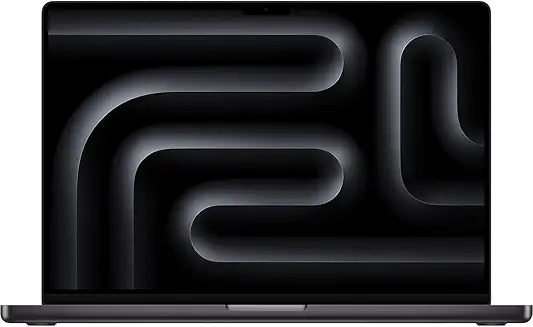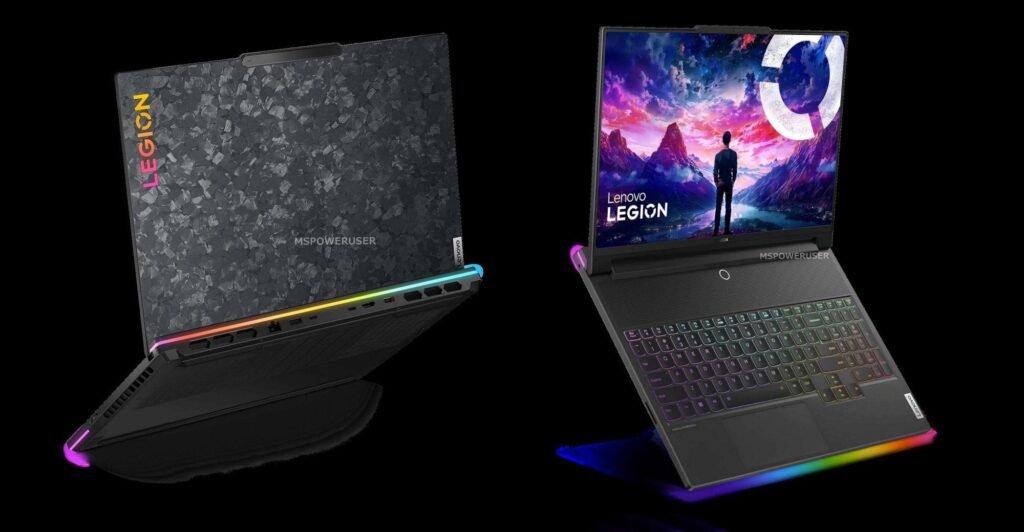MOST POWERFUL MacBook vs PC Laptop
This is currently the most powerful laptop Apple has ever produced: the M3 Max MacBook Pro. And this is one of the most powerful Windows laptops available: the Lenovo Legion 9i. But how do they compare? Are MacBooks just fancy, overpriced pieces of junk, or could they actually be more powerful than Windows laptops now? In this comparison, I’ll be evaluating both laptops in various real-world applications and workflows.
I’ll also cover other aspects, such as how hot they get, fan noise, and what happens when you really push them. This comparison is based entirely on my own experiences after using both Macs and Windows machines for the past 20 years. As a result, buying all these devices every year has become quite expensive.
In terms of price, the Lenovo Legion 9i I have here ranges from $3,500 to $4,000, depending on sales, while the 16-inch M3 Max MacBook Pro with 48 GPU cores costs around $4,000. Despite the similar price range, the technology behind these laptops is quite different. The MacBook uses ARM-based Apple Silicon, while the Lenovo uses x86 architecture. They’re essentially apples and oranges. But one of the biggest differences, in my opinion, is how they manage memory (RAM).
The Windows laptop has 32GB of system RAM to run programs and processes, plus 16GB of RAM dedicated to the RTX 4090 GPU. At first glance, you might think that 32GB plus 16GB equals 48GB, which matches the MacBook’s RAM. However, Apple Silicon works differently. It uses something called unified memory, meaning that the CPU and GPU share the same memory pool. This gives the M3 Max’s GPU access to almost three times the memory of the RTX 4090, which we’ll explore further.
At the end of the day, both laptops perform similar tasks like gaming or 3D rendering. What’s really important, though, is how they handle things like battery life, efficiency, and how well they execute these tasks. So, let’s focus on those aspects, leaving out comparisons like operating systems, keyboards, and port selection.
CPU Comparison
The MacBook features a 16-core M3 Max CPU, while the Lenovo has an Intel i9-13980HX. Using the latest version of Cinebench 2024, which now has better support for Apple Silicon, the M3 Max slightly outperforms the Intel chip in both multi-core and single-core performance by about 10%. If you’re a coder who regularly compiles code, the M3 Max is also superior in that area.
Looking at power consumption, Intel claims the i9-13980HX can draw up to 157 watts. In my testing, it hovered around 125 watts during Cinebench, while the M3 Max CPU drew just 52 watts. To put this in perspective, the MacBook was only 12% faster, but it consumed less than half the power to achieve that result. Comparing their scores per watt visually highlights this efficiency difference. This is especially crucial for a portable laptop, but we’ll dive deeper into that later.
Real-World Workflow Performance
Now, let’s see how these laptops perform in real-life workflows. Starting with creative tasks like those in the Adobe Suite, I used PugetBench to benchmark performance. It includes tasks like timeline scrubbing, playback, rendering, and effects. For almost any Adobe software, the MacBook outperforms the Lenovo. Note that for Photoshop, I used the Intel version since the benchmark hasn’t been updated for Apple Silicon, so these results were based on Rosetta 2 emulation.
After Effects, in particular, performs very well on the M3 Max, as it’s both RAM and GPU intensive. The M3 Max’s unified memory allows After Effects, the CPU, and GPU to share 48GB of memory at a speed of 400GB/s, whereas the Lenovo has slower and less available RAM for the GPU. There’s a lot more I want to show you, but these laptops are top-tier in terms of performance.
Video Editing
When it comes to video editing, the results surprised me. I focus on real-world tests, such as editing 4K multicam timelines with four demanding footage streams and color grading, or timelines with maximum noise reduction. In these scenarios, there was no noticeable difference between the two laptops in scrubbing or real-time playback. For video editors, this is crucial because 95% of the time is spent scrubbing and previewing footage.
For more intensive tasks like rendering 30-minute multicam projects and stabilizing demanding footage, there was also almost no difference. However, I did find it interesting that the Mac outperformed the Windows laptop when rendering in a Windows-specific codec, DNxHR. Previously, the Mac always lagged behind in this area because it couldn’t take full advantage of the hardware video encoders and decoders in Apple Silicon. But with the M3 Max, improvements in the GPU seem to have closed this gap.
3D Workflows
Now, for 3D workflows, let’s look at Blender. It takes advantage of the ray tracing cores in the NVIDIA GPU on the Windows laptop to improve rendering performance. However, for the first time, Apple Silicon supports hardware-accelerated ray tracing. Blender’s new 4.0 update allows users to select Metal RT for better performance.
At first glance, it doesn’t seem to make a huge difference. The RTX 4090 still outperforms the M3 Max, being twice as powerful in ray-tracing tasks in programs like Blender and Cinema 4D. Keep in mind that Apple’s ray-tracing support is still limited, and very few apps currently take advantage of it. This likely won’t change for a while.
But let’s put things in perspective. In my previous video, I compared an M1 Mac against an RTX 3080 Ti laptop, and the differences were much more significant. The M1 Mac was about five times slower than the RTX 3080 Ti. However, with the M3 Max, the gap is now much smaller.
Eighteen months later, as we’ve just seen, that gap has closed significantly. Instead of being five times slower, the MacBook is now only about twice as slow. This brings us perfectly to the next comparison: gaming.
A major factor here is that most game developers design their games for Windows, given that it’s one of the largest platforms for gaming, while Mac’s gaming market is much smaller. However, in an ideal world with synthetic benchmarks, the M3 Mac’s GPU, using the Metal API, comes fairly close to the RTX 4090 running on DirectX 12. In real-world scenarios, though, even with a semi-optimized game for Apple Silicon like Tomb Raider, the gap widens, and the Windows machine performs better due to broader game support.
But when I switched to a game optimized for both platforms, like Resident Evil Village, and enabled all platform-specific enhancements—RTX DLSS on the Legion and Metal FX upscaling on the M3 Mac—the performance became very close. For this comparison, I played the game on the exact same external gaming monitor at 1440p resolution. As you can see, the FPS is very similar between the two. I also tested Metal FX upscaling in performance mode, which boosted the FPS but caused a significant drop in image quality, almost downscaling the graphics to 1080p or 720p.
While I’d still prefer the Legion for serious gaming—given its gaming-specific features like G-Sync and a better screen—it’s impressive that the performance between these two laptops in a modern AAA-rated game is so close. Even if you’re not a fan of MacBooks, that’s hard to ignore.
Quick note: We aren’t seeing the new hardware-accelerated ray-tracing tech in the M3 Macs yet. It’s still in its early stages, and there may be significant performance improvements once support and compatibility grow.
Power Efficiency and Heat Management
Now, let’s focus on a couple of major downsides of Windows laptops compared to their Apple counterparts. First, I want to address the performance byproducts—Windows laptops are powerful but often get hot and loud.
The 16-inch M3 MacBook’s fans aren’t silent, but they’re considerably quieter and often won’t even turn on unless necessary. Take a listen. On the other hand, Intel and RTX-powered laptops, like the Legion, produce much more heat, particularly from the GPU, and this heat is transferred directly into the laptop’s chassis.
The Mac just runs cooler. But why is this? Why does the MacBook not only keep up with the Windows machine in most areas, but also do so while being cooler and quieter? The answer is efficiency. For example, when I attached a power usage meter to each laptop while performing a demanding task with a full battery, the MacBook used three and a half times less power than the Legion while achieving similar results.
Of course, this depends on the task. For video editing or using Adobe apps, the Mac performs equally well or better but uses significantly less power. If I unplug the Legion from its charger and set it to high-performance battery mode, its performance drops considerably. This doesn’t happen with the M3 Max, as it’s so efficient that the battery can provide enough power for the system to run at full speed.
Honestly, I was pretty surprised by these performance differences this year. We can criticize Apple all we want, but no one can deny the impressive performance improvements Apple has brought with the M3 Max. 3D-related tasks like Blender and gaming—areas where Windows machines have traditionally excelled—are now areas where the MacBook is rapidly catching up. And with things like hardware-accelerated ray tracing and growing support from major game developers, the next three to five years are going to be very interesting.


Leave a Reply